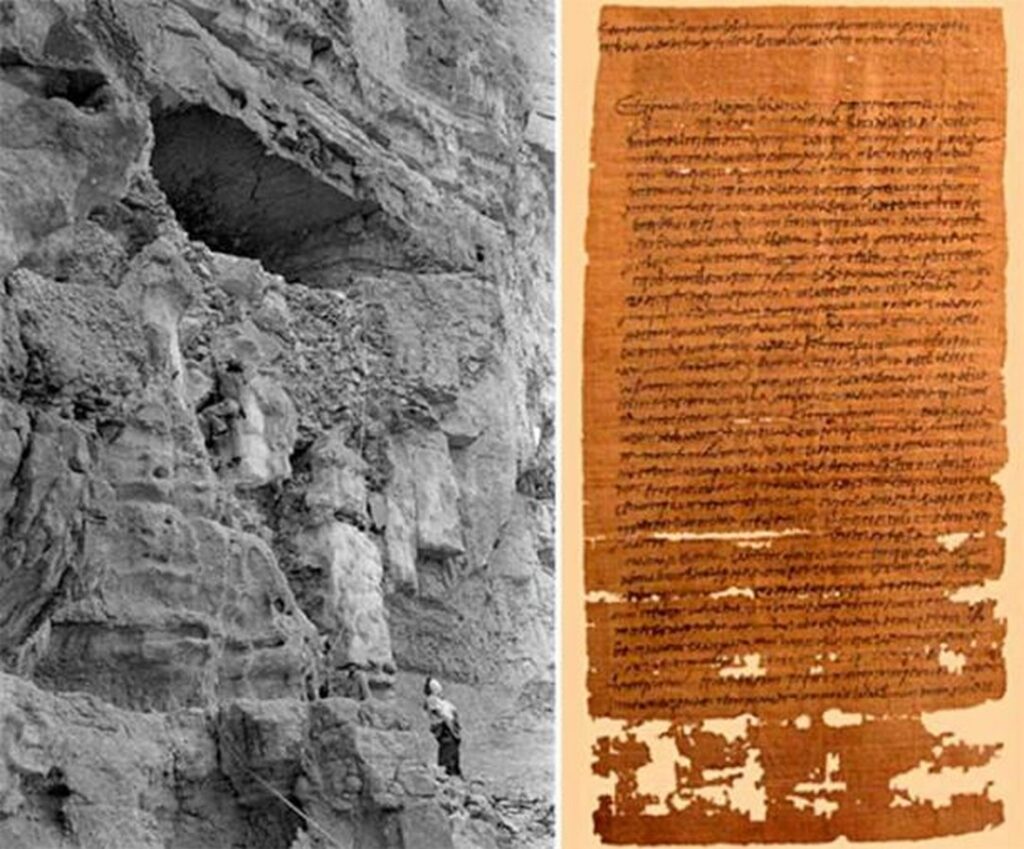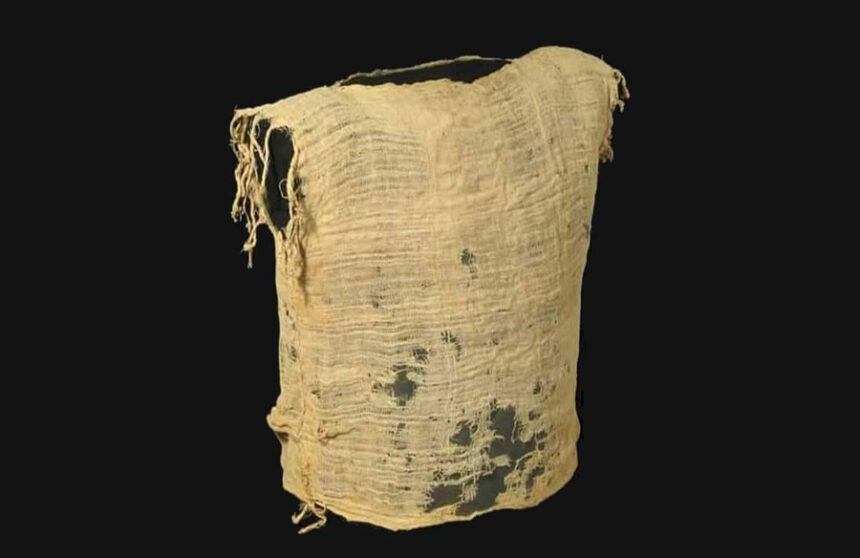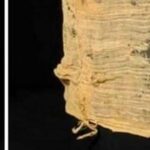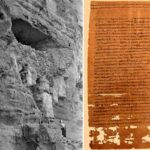Delving into the Historical Tapestry
Nestled within the Judean desert’s Nahal Hever Valley, the Cave of Letters stands as a testament to Israel’s rich archaeological heritage. Discovered in the early 1960s and excavated by archaeologist Yigael Yadin, this renowned site has offered profound insights into ancient Jewish history, particularly during the tumultuous period of the Bar Kokhba revolt against Roman rule (132-136 AD).

A Tapestry of Textiles
Recent explorations within the Cave of Letters have unearthed a remarkable artifact: a 1,900-year-old child’s nightgown adorned with intriguing “knots.” Textiles dating back to the Roman period have been found at various sites across Israel, but the Cave of Letters stands out for its unique collection of textiles featuring these distinctive knots, believed to hold religious and protective significance.
Deciphering the Ancient Weave
The analysis of the discovered gown reveals it to be a child’s undergarment, likely worn beneath a decorative woolen garment. Constructed using a simple twining technique, the gown exhibits signs of wear and tear, with irregularities in weaving and sewing. Intriguingly, the hem of the garment is adorned with knots, suggesting a deeper symbolic meaning embedded within the fabric.

Protective Symbolism
Dr. Orit Shamir, an Israel Antiquities Authority textile specialist, proposes that the knots adorning the gown’s hem may have served a protective function, shielding the child from illness and harm. Drawing parallels to ancient Jewish religious practices, where knots were often used for protective purposes, Dr. Shamir speculates that mothers may have tied these knots while reciting prayers and invoking divine blessings for their children’s well-being.
The Power of Symbolic Rituals
In ancient Jewish tradition, knots held profound symbolic significance, representing unity, divine connection, and spiritual protection. The act of tying knots during prayer rituals, akin to those found on prayer shawls (Tallit) and phylacteries (Tefillin), was believed to invoke divine protection against malevolent forces. Thus, the knots adorning the child’s gown reflect a deeply ingrained belief in the spiritual efficacy of symbolic rituals in safeguarding against adversity.





Leave a Reply